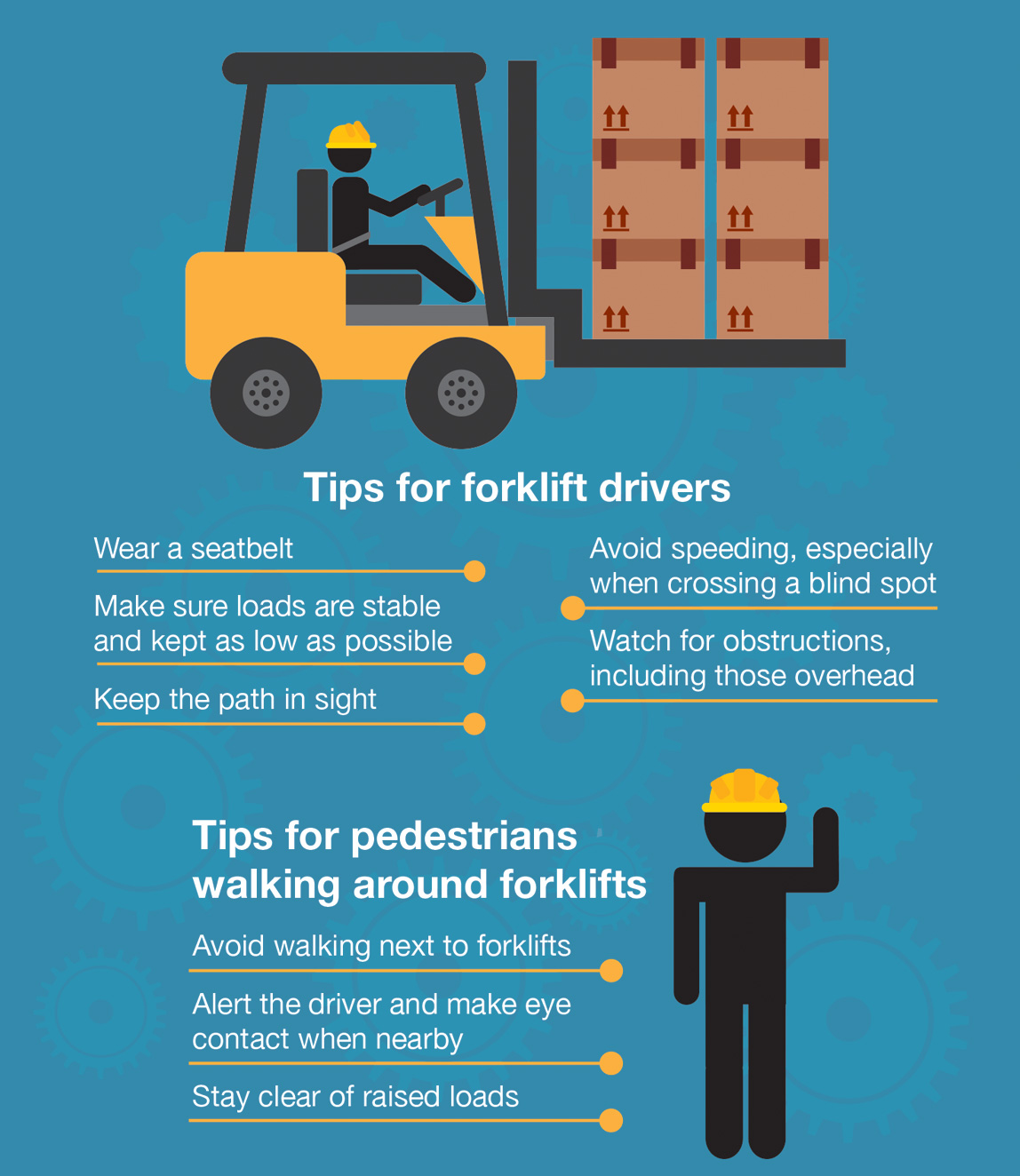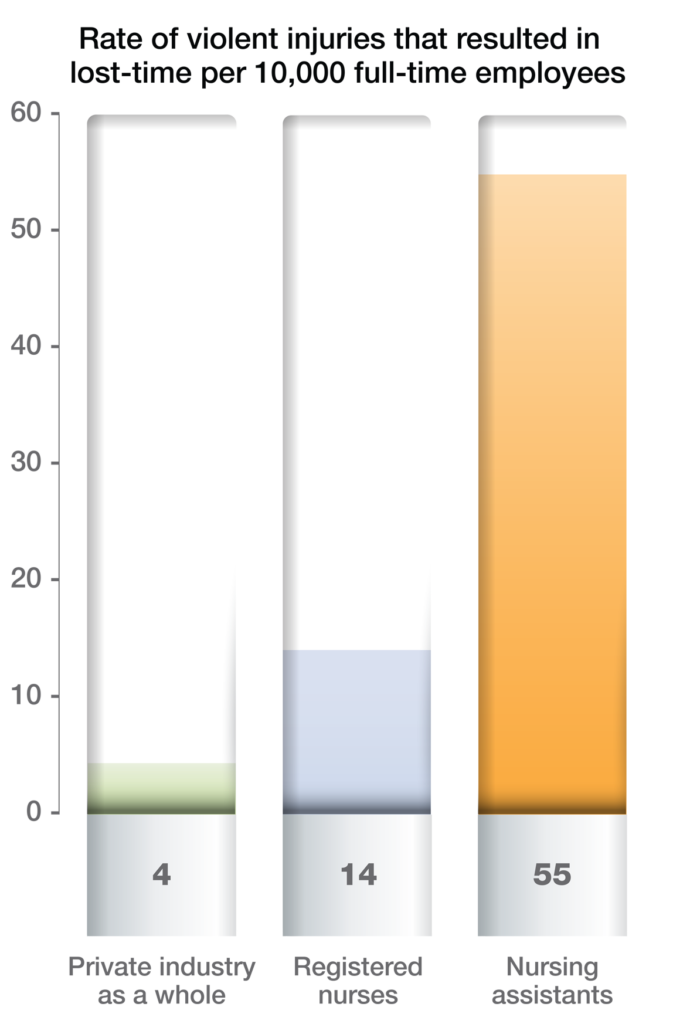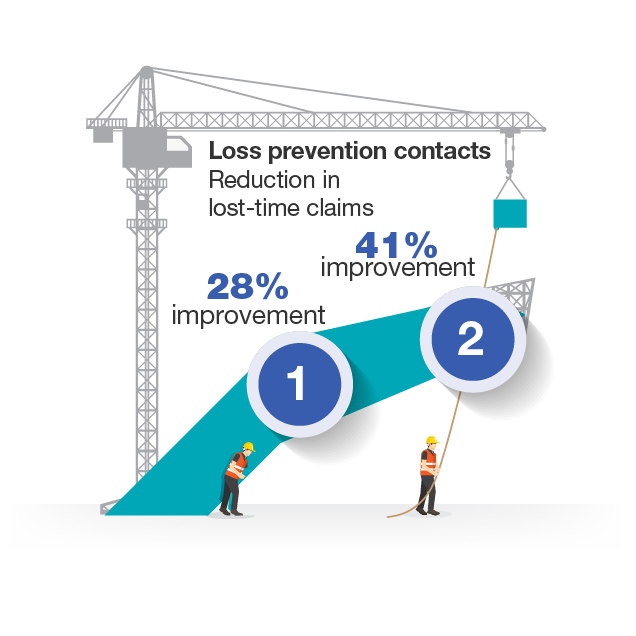While forklifts play a useful and necessary role in many work environments, they can also be dangerous when not operated with care. According to the Occupational Safety & Health Administration, forklift-related accidents account for approximately 85 deaths and 96,700 injuries every year.
Tips for forklift drivers
Forklift-related injuries most often result from inattention, distraction, excessive speed, poor driving habits and lack of training.
Tips to reduce accidents and injuries for forklift drivers include:
- Wearing a seatbelt
- Making sure loads are stable and kept as low as possible
- Keeping the path in sight
- Watching for obstructions, including those overhead
- Avoiding speeding, especially when crossing a blind spot
Tips for pedestrians walking around forklifts
Pedestrians should also exercise caution around forklifts.
Some suggested safe practices are:
- Avoiding walking next to forklifts
- Alerting the driver and making eye contact when nearby
- Staying clear of raised loads
Loss prevention team trains on forklift safety
On June 1, SFM’s Loss Prevention team attended an in-house forklift training session at the Barrier Free Access facility in New Brighton, Minnesota. The event helped serve as a reminder about how dangerous forklifts can be, said Senior Loss Prevention Representative Jeff Aafedt.
“Equipment-specific training … and solid safety procedures are vital to preventing workplace injury exposures.”
~ Loss Prevention Specialist Julie Thatcher
Aafedt helped lead the training session, along with Loss Prevention Specialist Julie Thatcher, covering topics such as forklift inspections, safe operation, training requirements and pedestrian safety. As part of the training, members of the Loss Prevention team had a chance to operate a forklift.
“Equipment-specific training in the environment where equipment will be operated, pre-shift inspections and solid safety procedures are vital to preventing workplace injury exposures,” Thatcher said.
Following the training, SFM created a new Supervisor Initiated Training resource on forklift safety for pedestrians. Find this and other forklift safety resources in the resource catalog.



